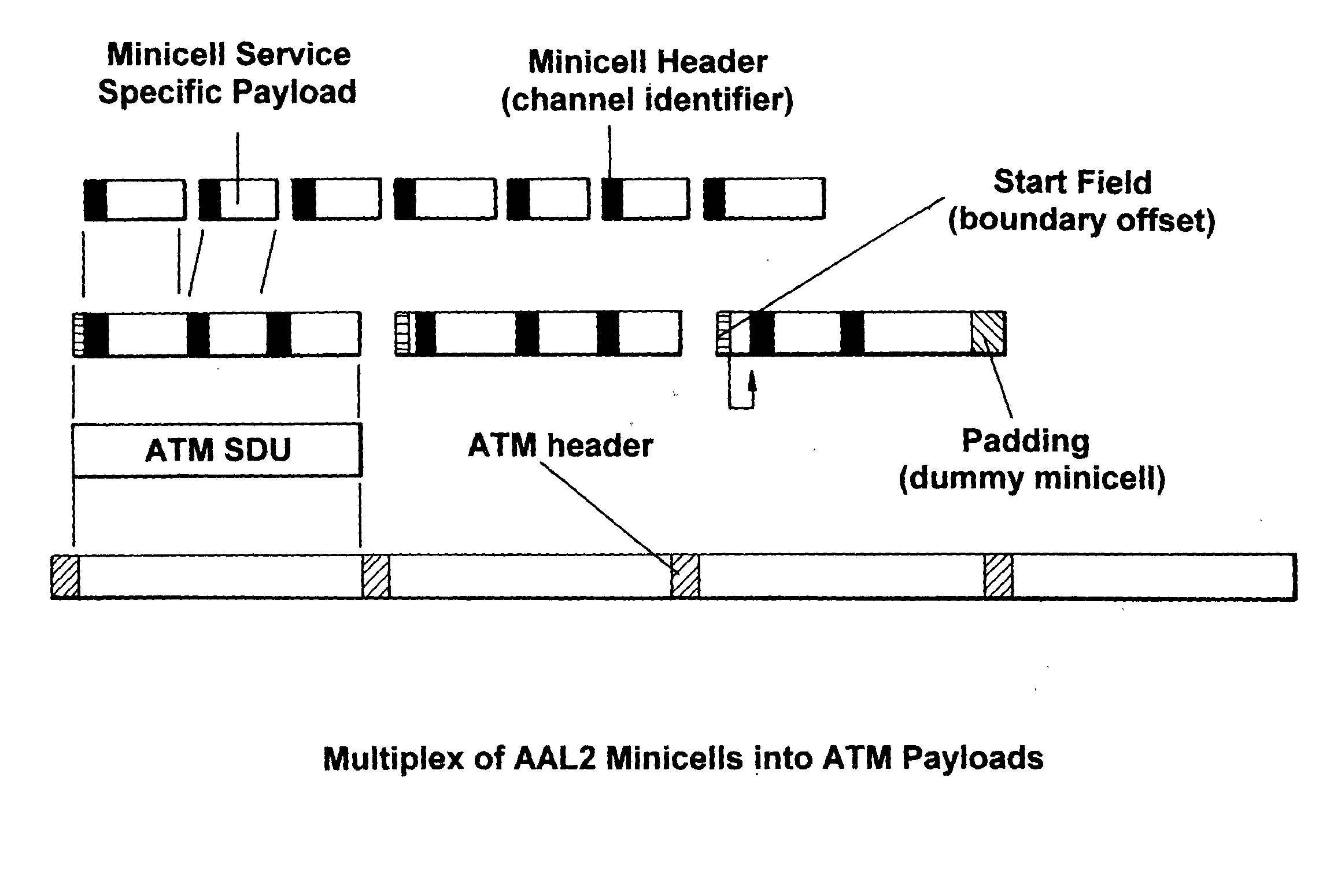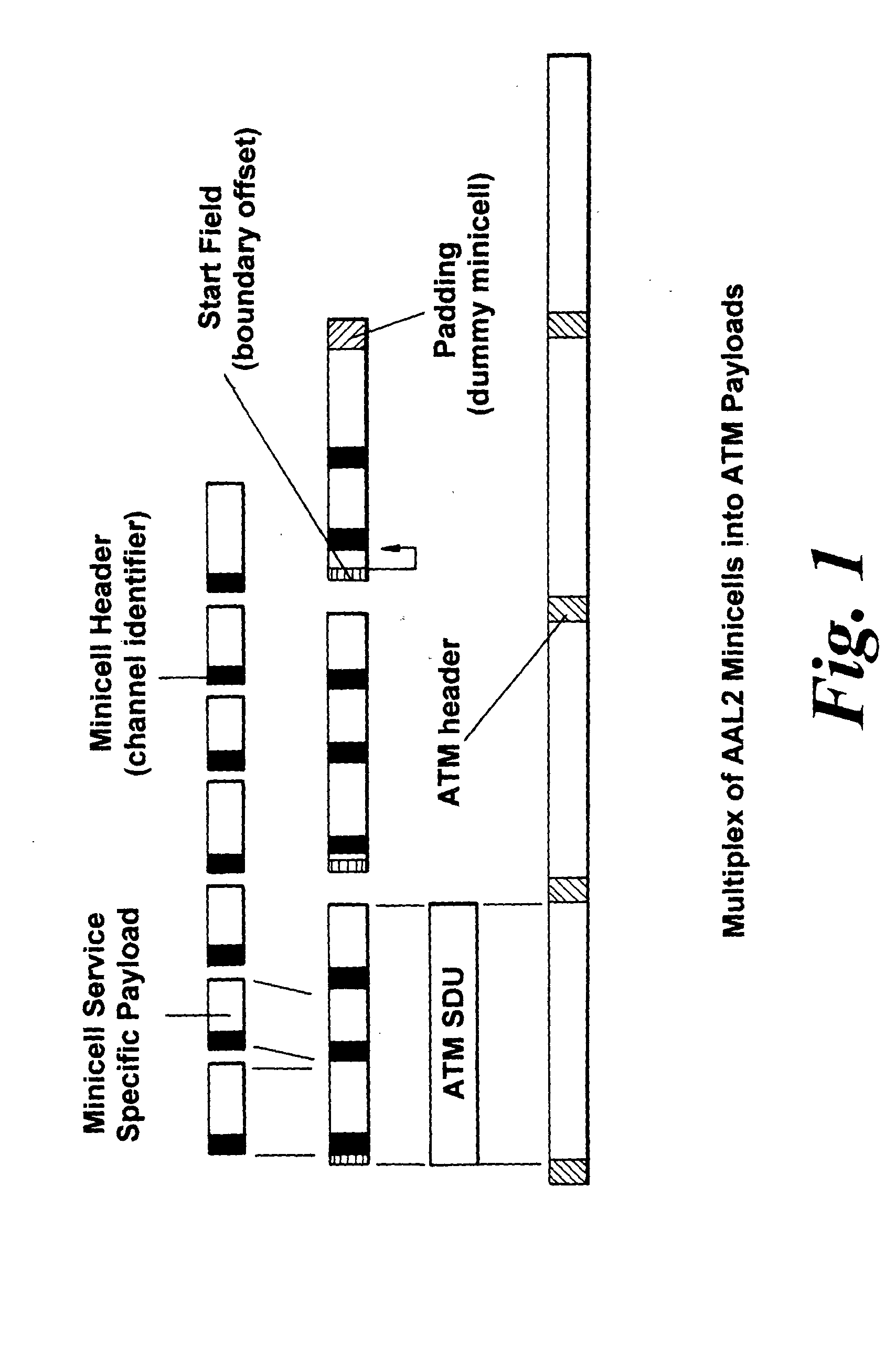ATM packet scheduler
- Summary
- Abstract
- Description
- Claims
- Application Information
AI Technical Summary
Benefits of technology
Problems solved by technology
Method used
Image
Examples
Embodiment Construction
[0062] Referring first to FIG. 1, which is introduced for explanatory and comparative purposes, this illustrates The multiplex of AAL2 mini-packets into ATM cell payloads is illustrated in FIG. 1. By multiplexing multiple sources into the bearer payload, the cell assembly delay incurred is minimised compared to traditional ATM adaptation mechanisms whereby one VCC supports a single user only. Clearly, as the number of simultaneous users of the bearer VCC decreases the cell assembly delay will tend to increase. Therefore the AAL2 adaptation standard specifies a timer called the holdover timer that provides a bound for this delay under these conditions. Configurable on a per VCC basis, the holdover timer is reset at the start of each cell payload assembly process (i.e. the first octets of any AAL2 packet placed into the cell payload cause the timer to reset and the timing process to begin). If the timer expires prior to the complete assembly of a payload then at the point of expiry th...
PUM
 Login to View More
Login to View More Abstract
Description
Claims
Application Information
 Login to View More
Login to View More - R&D
- Intellectual Property
- Life Sciences
- Materials
- Tech Scout
- Unparalleled Data Quality
- Higher Quality Content
- 60% Fewer Hallucinations
Browse by: Latest US Patents, China's latest patents, Technical Efficacy Thesaurus, Application Domain, Technology Topic, Popular Technical Reports.
© 2025 PatSnap. All rights reserved.Legal|Privacy policy|Modern Slavery Act Transparency Statement|Sitemap|About US| Contact US: help@patsnap.com



